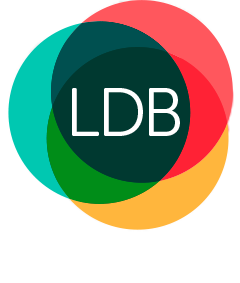What is fringe benefits tax (FBT)?
July 5, 2022

Fringe benefits can be the cherry on top of an offer from a potential employer.
These perks are used in recruitment and retention, and may even reduce your taxable income.
Whether you’re an employee or an employer, it’s important to understand the tax implications of giving and receiving fringe benefits.
What is fringe benefits tax?
A fringe benefit is a payment made to an employee which is not their salary or wages.
These benefits are subject to fringe benefits tax (FBT) which is separate to income tax and calculated on the taxable value of the fringe benefit.
Employers are liable for the FBT that applies to the benefits an employee receives.
Why does a company offer fringe benefits?
Fringe benefits are essentially perks or extras that companies typically use to attract and retain high quality employees and to gain a competitive edge when it comes to recruitment.
The benefit can be something for the employee, their spouse, or their children.
Employers can generally claim the cost of providing fringe benefits and the amount of FBT paid as income tax deductions.
What are examples of fringe benefits?
The most common fringe benefits include using a work vehicle for private purposes, paying for an employee’s gym membership or private health insurance, free concert tickets, reimbursing school fees and childcare costs, and discounted loans.
Fringe benefits can also be provided under a salary sacrifice arrangement, which may additionally benefit the employee by dropping them into a lower tax bracket.
What is not considered a fringe benefit?
The Australian Taxation Office (ATO) does not consider an employee’s salary, employer contributions to a super fund, termination payments or shares purchased through a share acquisition scheme to be fringe benefits.
Dividends, benefits provided to volunteers or contractors, and some benefits provided by religious institutions are also not fringe benefits.
Are there any benefits that are better than others?
A major reform currently being considered by the Federal Government is to make many electric vehicles provided through a business arrangement exempt from Fringe Benefits Tax – even if they have no business usage.
This will provide employers and employees with a major planning opportunity in the way remuneration packages are designed in future, particularly as the availability of electric vehicles grows over time in the Australian market.
Once legislated, we will analyse this further via a subsequent article.
What is Reportable Fringe Benefits Amount (RFBA)?
When the taxable value of fringe benefits paid to an employee in an FBT year exceeds $2000, then it is considered a Reportable Fringe Benefit Amount (RFBA).
This amount must be reported on the employee’s end of financial year income statement or payment summary.
While the RFBA is not taxable income, it can affect whether you are entitled to things like the Medicare levy surcharge, family tax benefits, child support payments, the private health insurance rebate, and superannuation co-contributions.
It is also used to calculate the amount you must repay towards government loans such as the Higher Education Loan Program (HELP), Student Financial Supplement Scheme (SFSS), and Trade Support Loan (TSL).
Some fringe benefits, such as car parking and remote area housing assistance, don’t have to be reported on your income statement or payment summary.
How is FBT calculated?
Fringe benefits tax is calculated based on the highest tax bracket regardless of what tax bracket an employee is on.
When working out its FBT liability, the employer must gross-up the taxable value of benefits provided to reflect the gross salary employees would have to earn at the highest marginal tax rate (including the Medicare levy) to buy the benefits after paying tax.
There are two different types of gross-up rates used to calculate fringe benefits tax amounts.
The first applies to benefits where the employer is entitled to a goods and services tax (GST) credit for GST paid. The second applies when there is no GST credit entitlement.
The tax payable is the taxable amount multiplied by the FBT rate, which is currently 47 per cent.
The FBT year is different to the financial year and runs from April 1 to March 31.
Need tax advice?
Navigating tax, including fringe benefits tax, can be complex and guidance from a trusted financial adviser is crucial.
To ensure you understand and meet your fringe benefits tax obligations, contact the experts at LDB Group for advice. Simply call (03) 9875 2900 or send us details via the contact form below.
